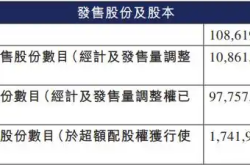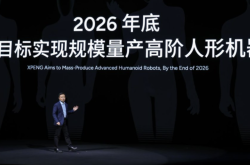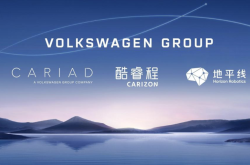Asian Auto Market | May 2025 in Singapore: Chinese Brands Secure a Stronghold
![]() 06/27 2025
06/27 2025
![]() 682
682
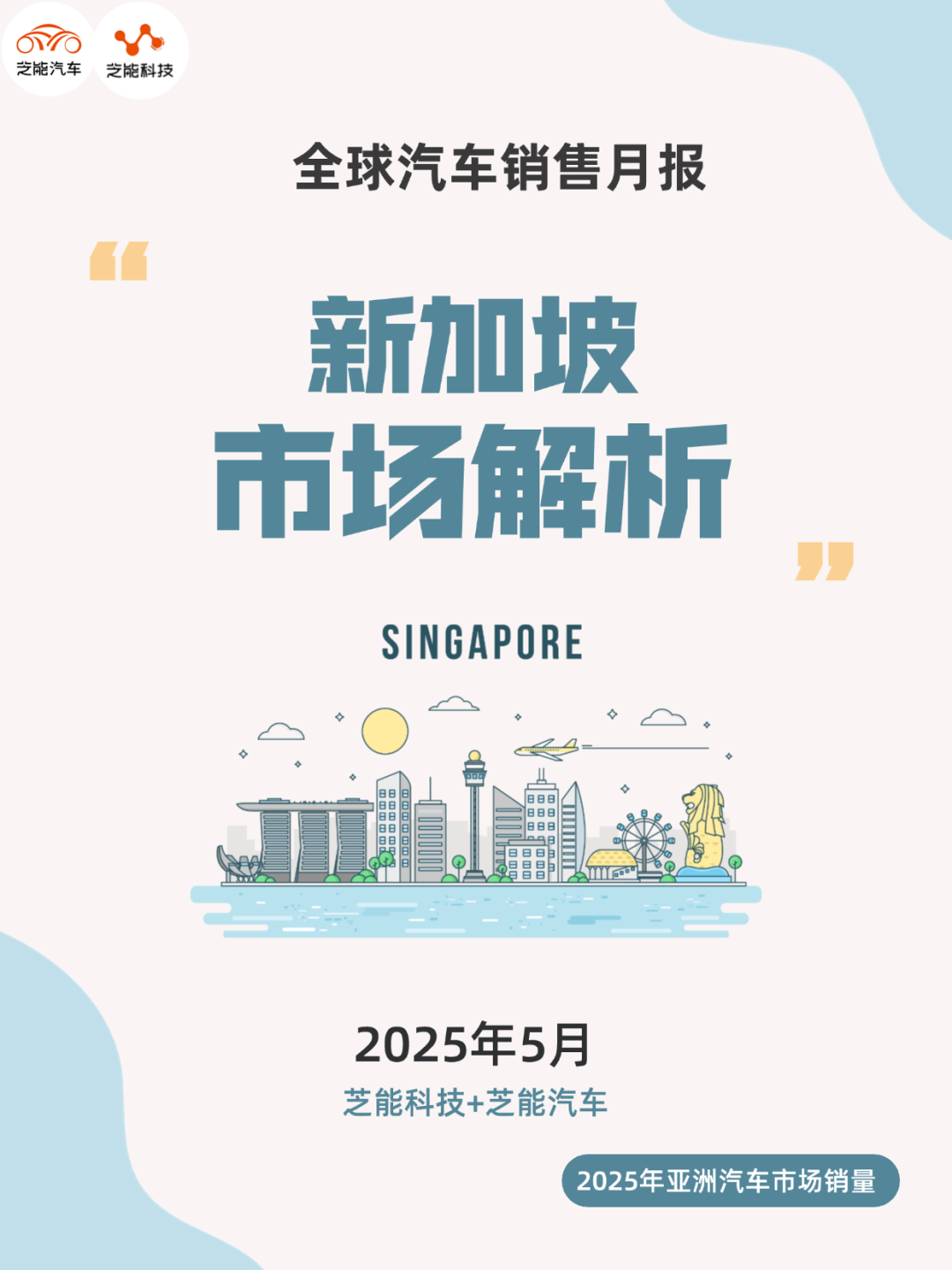
The Singapore auto market thrived in May 2025, with sales surging 39.7% year-on-year to 4,455 units. Cumulative sales for the first five months of the year jumped 30.5% year-on-year, reaching 19,300 units.
Amidst the market's overall expansion, Chinese brands collectively gained significant momentum. BYD maintained its leading position with a market share of 18.5%, while GAC Motor surged over threefold year-on-year to re-enter the top ten. New entrants, such as XPeng and Chery, also demonstrated robust growth.
01 Sales Dynamics and Power Structure Shifts in the Singapore Market
In May, Singapore's overall auto sales surged nearly 40% year-on-year, with a shift in consumption towards pure electric models, accelerating the pace of replacement in this small but open market.
From a brand perspective:
◎ Chinese brand BYD topped the charts with 825 units sold, securing a market share of 18.5%, significantly ahead of Toyota in second place with 15%.
◎ BMW and Mercedes-Benz closely followed, capturing approximately 10% and 9.4% of the market share, respectively.
◎ Tesla rebounded to fifth place, selling 412 units and capturing a 9.2% market share, nearly doubling year-on-year and re-establishing itself as a mainstream player.
◎ Among established Japanese brands, Honda remained resilient with a 33.9% year-on-year increase, while Nissan and Hyundai declined by 13.2% and 19.2%, respectively.
◎ Korean brands continued to struggle.
◎ On the German front, BMW increased 37.7% year-on-year, while Mercedes-Benz saw a slight decline. Audi achieved double-digit growth, bolstered by its new energy models.
From a powertrain perspective:
◎ The proportion of pure electric and plug-in hybrid models in Singapore continued to rise, with the rapid expansion of brands like Tesla, BYD, XPeng, GAC Motor, and NIO driving market growth.
◎ This shift has led to a gradual decline in the share of traditional internal combustion engine models, even for brands like Toyota, which still have a strong hybrid lineup, facing structural challenges.
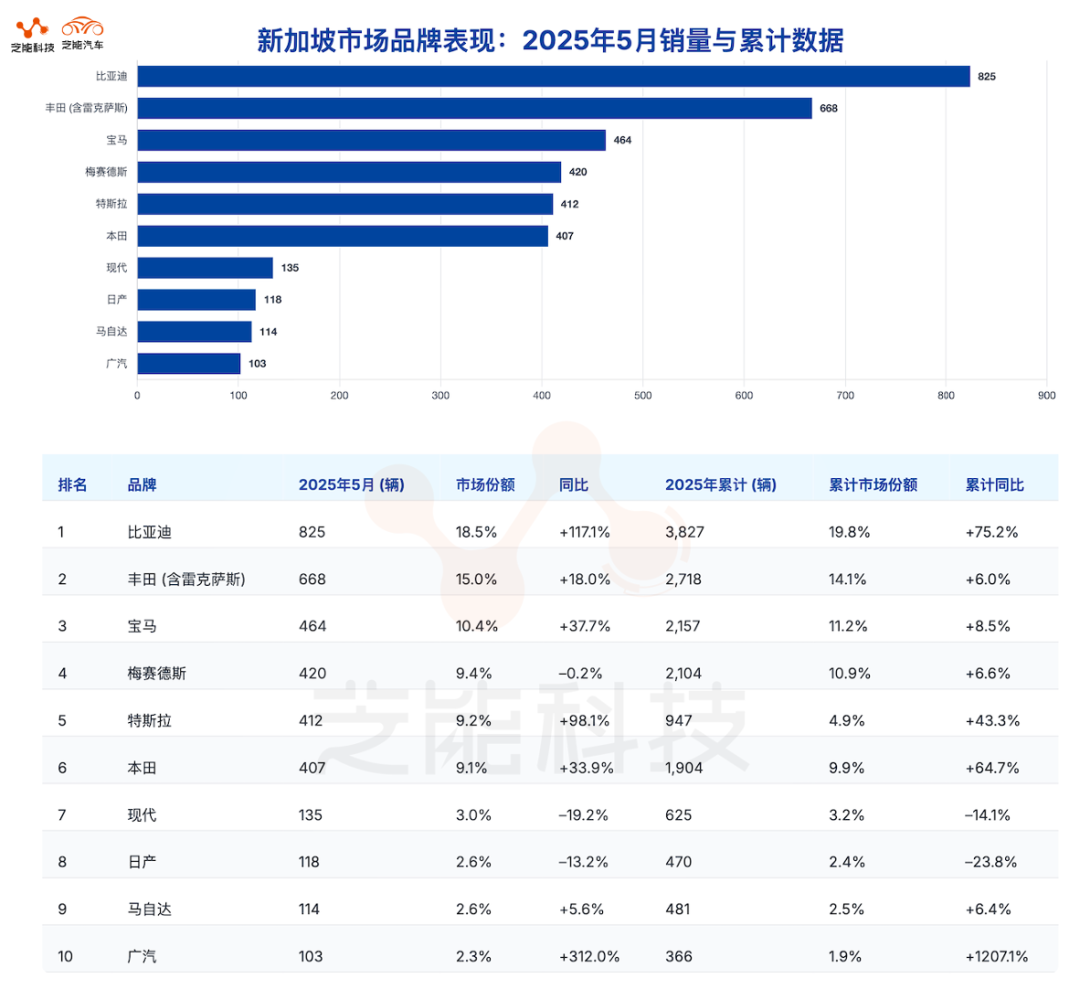
02 Chinese Brands Deepen Their Footprint in Singapore
Chinese brands are increasingly prominent in the Singapore market, forming a formidable tier led by BYD, GAC Motor, XPeng, and Chery.
In May 2025, the combined market share of Chinese brands in Singapore approached 30%, with BYD, GAC Motor, XPeng, and Chery at the forefront.
◎ BYD sold 825 units in May, maintaining its top spot with a year-on-year surge of 117.1%. It has established a virtuous cycle in channel construction, after-sales support, and user reputation. Models like the Dolphin, Seal, and ATTO 3, with their compact sizes and excellent energy efficiency, have become ideal choices for urban scenarios.

◎ GAC Motor's performance was particularly notable, ranking tenth in May with 103 units sold and a year-on-year increase of 312%, making it one of the fastest-growing brands that month. Since the beginning of the year, its cumulative sales have reached 366 units, marking a year-on-year increase of over 12 times.
◎ XPeng Motor successfully entered the rankings, placing thirteenth with 70 units sold and a 1.6% market share. As an emerging brand, XPeng's intelligent models, such as the G6 and P7, have attracted tech-savvy local users.
◎ Chery Automobile sold 47 units in May, surging 571.4% year-on-year. Its cumulative sales for the year have increased nearly 20 times.
This growth is attributed to the gradual effectiveness of its localization strategies for new energy models and streamlined traditional power products in the Southeast Asian market. As a brand with a long history of exports, Chery excels in precisely targeting the low-price, high-configuration market.
◎ Other Chinese brands, including Lantu (15 units), Great Wall (15 units), SAIC MAXUS (15 units), ZEEKR (12 units), Dongfeng Fengxing (15 units), and Skyworth (1 unit), have also achieved small-scale layouts, with some appearing on the list for the first time.
Structurally, almost all sales of Chinese brands in Singapore are new energy models, with a focus on pure electric vehicles. In contrast to Japanese and Korean brands, which still heavily rely on traditional powertrains, Chinese brands have gained a competitive edge through their early adoption of new energy strategies.
Summary
Despite its size, Singapore is a highly open and policy-sensitive market, often offering early indicators of industry trends.

